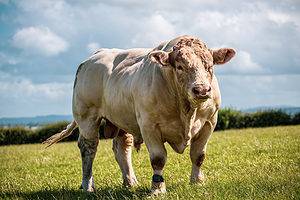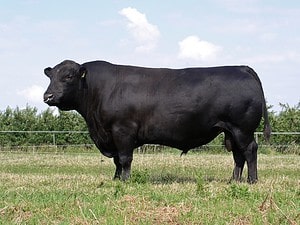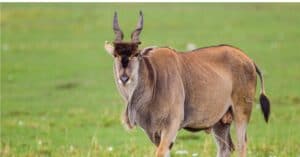Do male cows have udders? First off, a male cow does not technically exist. Instead of calling a mature male “cow” a “cow,” the correct term is “bull.” Males cows, or bulls, do not have udders. Only females are able to mature into cows because this anatomical feature is essential to the role of a cow. Nipples are seen on both males and females; however, males’ nipples are notably smaller than those found on females. Now, let’s explore six interesting facts about cows!
6 Interesting Facts About Cows
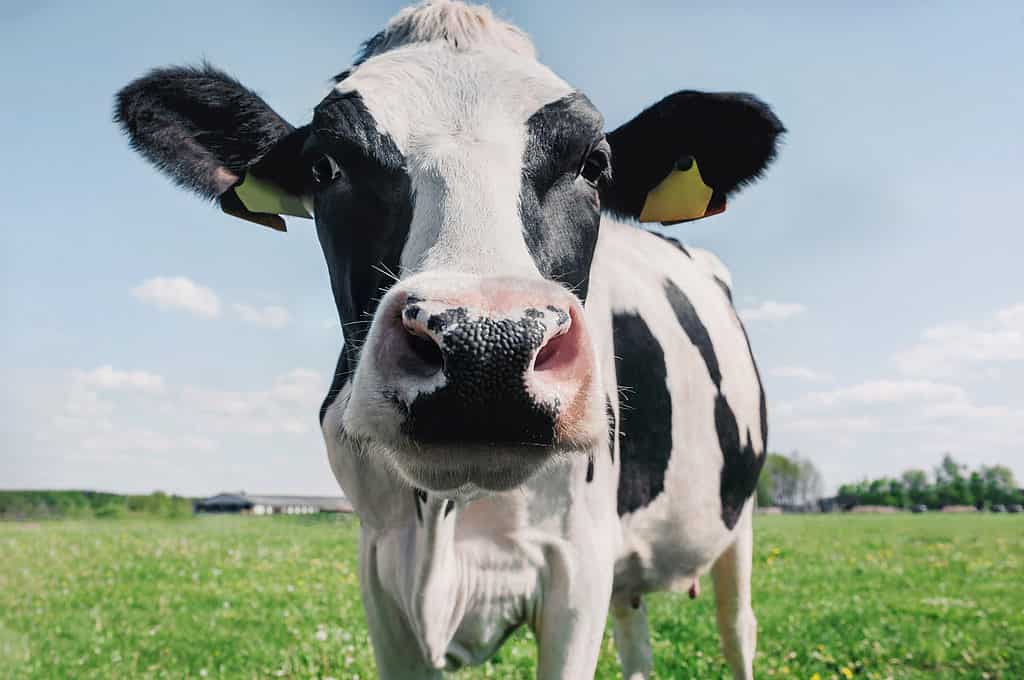
Domestic cows are curious about new things in their environment.
©Alena Demidyuk/Shutterstock.com
1. A Cow Is One Of Many Subgroups of Cattle
Cattle refers to both male and female large domesticated cloven-hooved herbivores. Many specialized terms for various categories of cattle exist. Steers and bullocks are both common names for young male cattle that have been castrated and are bred primarily for their meat. Oxen are adult male cattle that have been castrated and are employed for draft work.
Not all female cattle are designated as “cows,” either. Cows can only refer to female cattle that have produced milk. Till then, we just call them heifers. All cows typically produce milk, but regular cows will produce only enough milk for their calf. Dairy cows, on the other hand, produce excess milk, or too much milk for one calf.
Despite her calf being weaned, a dairy cow will continue creating milk for months if the milk is not relieved from her udders. Farmers take these cows to a milking parlor at least twice a day so that the animals let their milk out. This is how milk for human consumption is obtained.
2. Dairy Cows Must Keep Having Calves
Now that the question about if male cows have udders has been answered, let’s learn about actual dairy cows. In order for dairy cows to keep producing milk, it is imperative that they have a calf at least once every year. Approximately three months following the birth of her calf, the dairy cow will be artificially inseminated in order to produce more milk. After around three years of milk production, these high-yield cows are culled, and the meat from their bodies is used to manufacture beef.
3. Cow’ Sight and Smell Are Highly Developed
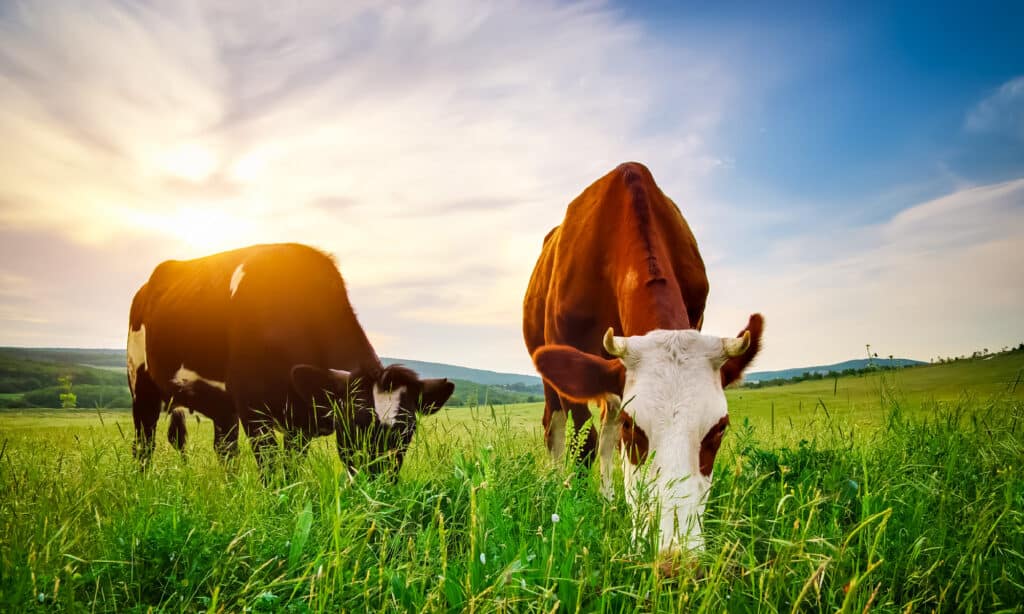
The majority of the food that cows consume is essentially grass.
©iStock.com/Toltek
In addition to learning if male cows have udders, let’s address a cow’s vision. A cow’s field of vision is nearly unbounded due to its eye placement. Since their eyes are on the sides of their skulls, this provides a nearly 360-degree perspective. This way they can keep an eye out for danger from every direction. However, they have poor peripheral vision and will have to move their head to focus on you. Cows, like humans, have a highly developed sense of smell as well. They can detect aromas from as far away as six miles.
4. Cows Have Unique Stomachs and Eating Habits
There is a widespread misunderstanding that cows have four stomachs. This is not true. In a cow, there is only one stomach, which is comprised of the rumen, which is where the cud is produced, the reticulum, the omasum, and the abomasum.
Because cows are ruminants (mammals that chew their cud), their stomachs are structured in a particular way. When a cow chews “cud,” she is bringing a bolus of food back into her mouth and re-chewing and re-swallowing it. Cattle drool when they do this. The first region of the stomach, known as the rumen, is buffered by the natural antacid found in this saliva. This is why they are classified as ruminants.
If a cow’s rumen is healthy and well-balanced, she will be able to digest forages more effectively, which will allow her to consume more feed and produce more milk. The rumen has the capacity to hold up to fifty gallons’ worth of food that has only been partially digested. A cow consumes approximately 40 pounds of food per day on average. That’s about as much as a standard bathtub can hold!
5. The Average Cow Yields About 500 Pounds of Edible Beef!
When acquiring a cow from a local farmer, you can estimate that you will obtain between 450 and 500 pounds of useable beef from that cow.
In order to put this into perspective, one cow has the ability to create enough ground meat to make almost 2,000 hamburgers that are quarter pounds each!
Greater than half of the entire cow is used to produce the amount of ground beef that is sold. The remaining beef can be prepared in a wide selection of different cuts, such as steak, roast, rib, brisket, tenderloin, and many others. This is probably one of the most interesting facts about cows aside from learning if male cows have udders.
6. Cows Can Live 20 Years or Longer

Cows can live up to 25 years old, although most are slaughtered before the age of 5.
©M. Vinuesa/Shutterstock.com
The average life expectancy of a cow is somewhere in the neighborhood of twenty years. There are some that live to be 25 years old. Examining the cow’s teeth in order to estimate its age is a common practice. In addition, the age can be deduced by the number of rings present in the animal’s horns. In most cases, cows used in the dairy industry are slaughtered before they reach the age of five.
The photo featured at the top of this post is © William Edge/Shutterstock.com
Thank you for reading! Have some feedback for us? Contact the AZ Animals editorial team.




